“Idhar se achha dikh raha hai, ya aage se?” asked my driver and forest guide, Vishal from Pench Tree Lodge. “Mujhe toh yahan se achha dikh raha hai”, I whispered as I relished the once-in-a-lifetime sighting of a beautiful young leopard sinking its teeth into a freshly caught deer by its mother, keenly watching over from a rock above.
Pench National Park— at 1200 sq km— straddles two states, Madhya Pradesh and Maharashtra. The inspiration behind Sir Rudyard Kipling’s famous literary work ‘ The Jungle Book’, Pench is the ‘Land of Big Cats’ and Mowgli!
Leopard Sighting Of A Lifetime!
Nested at Pench Tree Lodge— a 20-minute drive away from Pench National Park’s Karmajhiri Gate in Madhya Pradesh— my second safari proved destined as I finally sighted the yellow-tan rosette-covered feline in all its glory.
Despite a mini traffic jam caused by safari jeeps, with tourists gasping, chattering and aiming their cameras at it, the 8-month-old leopard enjoyed its Sunday Brunch without a care in the world.
View this post on Instagram
Peeking through my binoculars I observed the young cub had already eaten the eyeball of the Spotted Deer and was now tugging at and hungrily devouring its rouge flesh. From a distance, high above a rock, its mother sat relaxed, satisfied after a successful hunt which resulted in a hearty meal for her and her cub, enough to keep them satiated for another few days.
Leopards, as my forest guide informed me, are rarer to spot than tigers. They are shy, elusive creatures who seek the comfort of their unique rosette-covered coat to camouflage themselves. But at Pench with a population of around 100 leopards to 80 tigers, they have accepted human presence to a large extent.

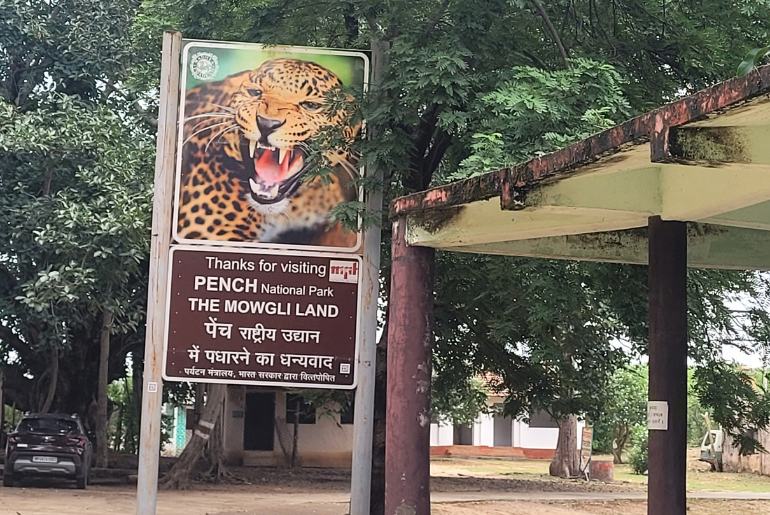
The Jungle Is Calling!
The dry deciduous forest of Pench is home to around 55 animals (mammals, amphibians and reptiles) and 210 species of birds.
Apart from the Big Cats, Pench houses the endangered Asiatic Wild Dog, Indian Bison, Langur, Spotted Deer, Nilgai, Sambhar, Bears, Jungle Cats, Jackal, Mongoose, Wolf, Hyena, Wild Boar, Monitor Lizard, Buff Striped Keelback Snake and many more.
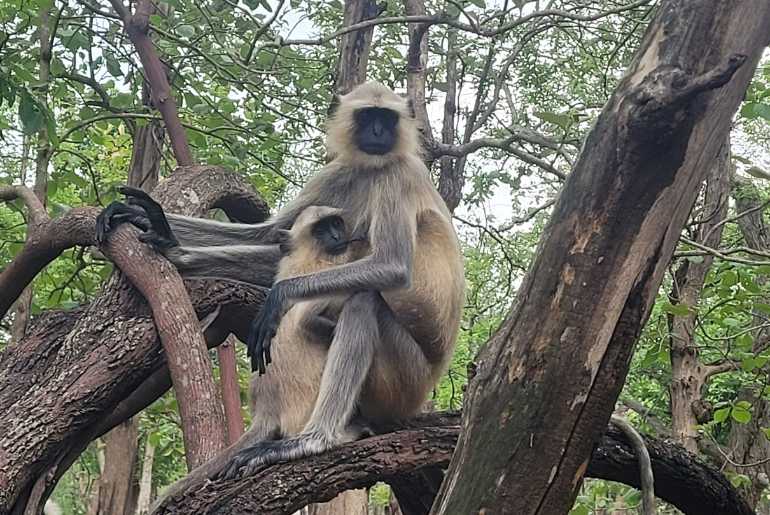
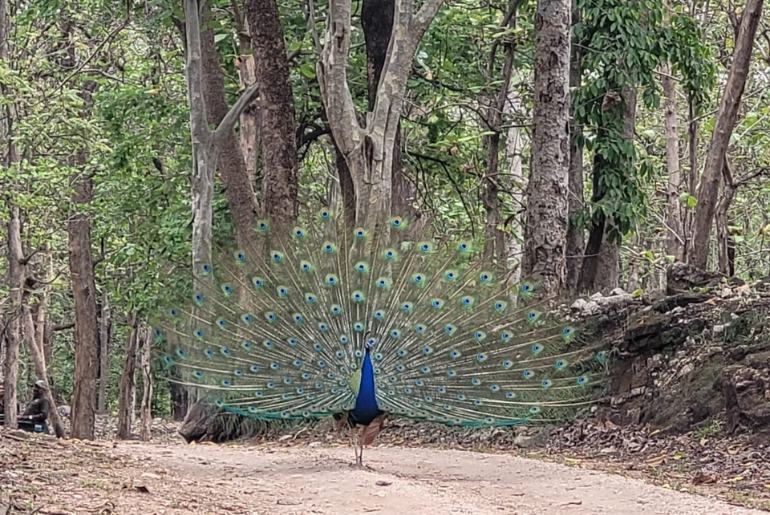
On my first safari at Pench, my disappointment at not spotting a Big Cat was overshadowed by the thrill of sighting the endangered Asiatic Wild Dog, right in front of our vehicle. A sighting, most foreign tourists would envy, was handed to me on a platter when a pack of Asiatic Wild Dogs or Dholes blocked our path and happily pooped.

“Tourists must book more than one safari during their stay. The chances of tiger and leopard sightings are higher”, advises the team at Pench Tree Lodge, where 3 safaris are conducted. The first and the longest one— from daybreak till afternoon. The second — from afternoon till sunset. And the third— a night safari.
I embarked on their longest safari, a 6-hour one, at the crack of dawn. During the monsoon season, a few days before Pench National Park’s core zone would shut down for 3 months, the chances of sightings are less in the lush green forests. Yet, right past the Karmajhiri gate, I was welcomed by herds of Spotted deer and groups of langurs, whom my forest guides said were “best friends who hung out together”.
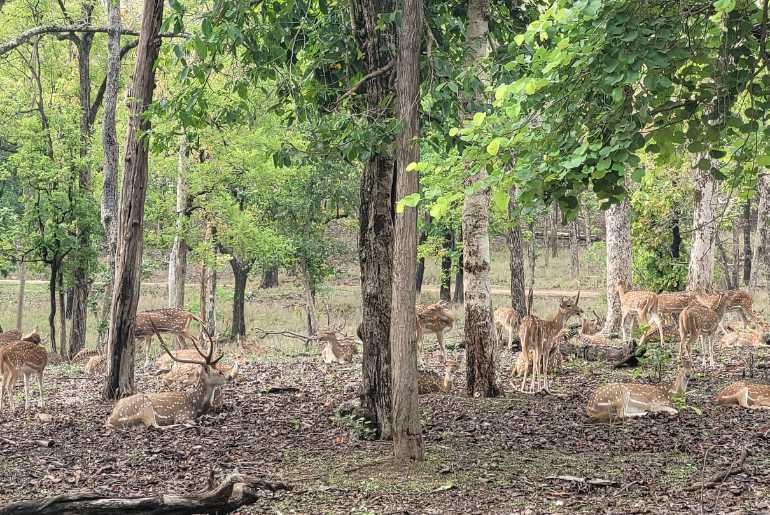
Safaris & Breakfasts In The Forest
Apart from the adrenaline-filled sightings, what makes the safaris special are the breakfasts served inside the park. The safari jeep’s bonnet is fitted with a make-shift table and an elaborate spread of freshly baked cakes, sandwiches, sabudana vada, chilla (gram flour pancakes), boiled eggs and freshly brewed coffee, tea and lemonade was laid out.
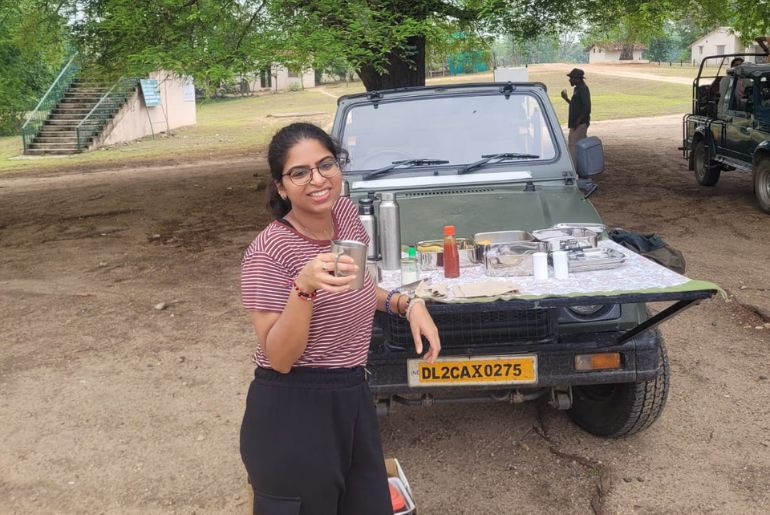
Yet, even after one-and-a-half hour of optimistically scouting the forest, it was still a no-show as far as the tiger was concerned. And we had no choice but to return to the park’s Karmajhiri gate.

I immediately signalled my forest guide and driver to stop the vehicle. We were awestruck to closely sight a handsome leopard. But before we could capture the moment, the animal retreated into the jungle.
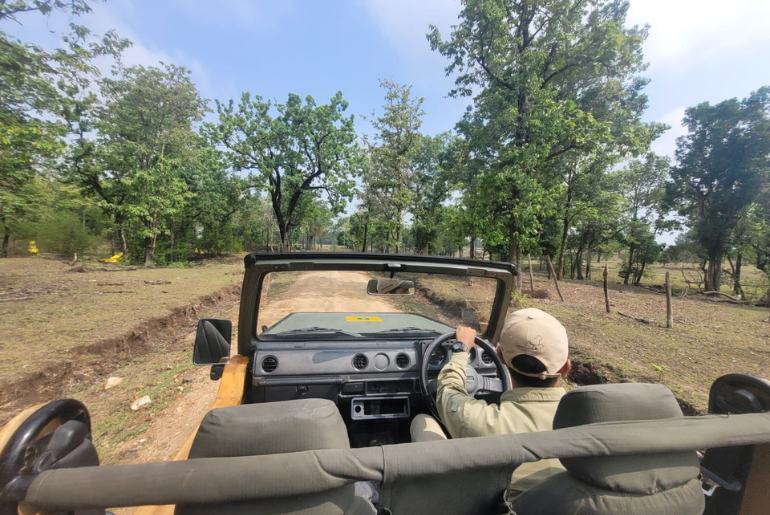
Well, Africans believe the Leopard to be the ‘King of the Jungle’. So, even though I didn’t spot any Tigers this time, looks like I got a farewell fit for the King, by the King.
Pench Tree Lodge: Luxury Cottages & Tree Houses
Apart from the exhilarating safaris, what makes this travel memorable is my stay at Pench Tree Lodge — a Mowgli-themed jungle resort run by the award-winning Pugdundee Safaris, who brought world-class wildlife and hospitality to India with an unwavering commitment to sustainability.
Nestled across 40 acres of land, Pench Tree Lodge houses 6 spacious luxury cottages and 6 rustic tree houses perched atop Mahua trees.
I spent the majority of my stay at the cottage, a 2-level, stone and Sal wood structure which can comfortably accommodate a family of four. The lower floor features a king-sized bed, bean bags, a writing desk, a bathroom, tea-coffee arrangements and a serene porch overlooking the grasslands.

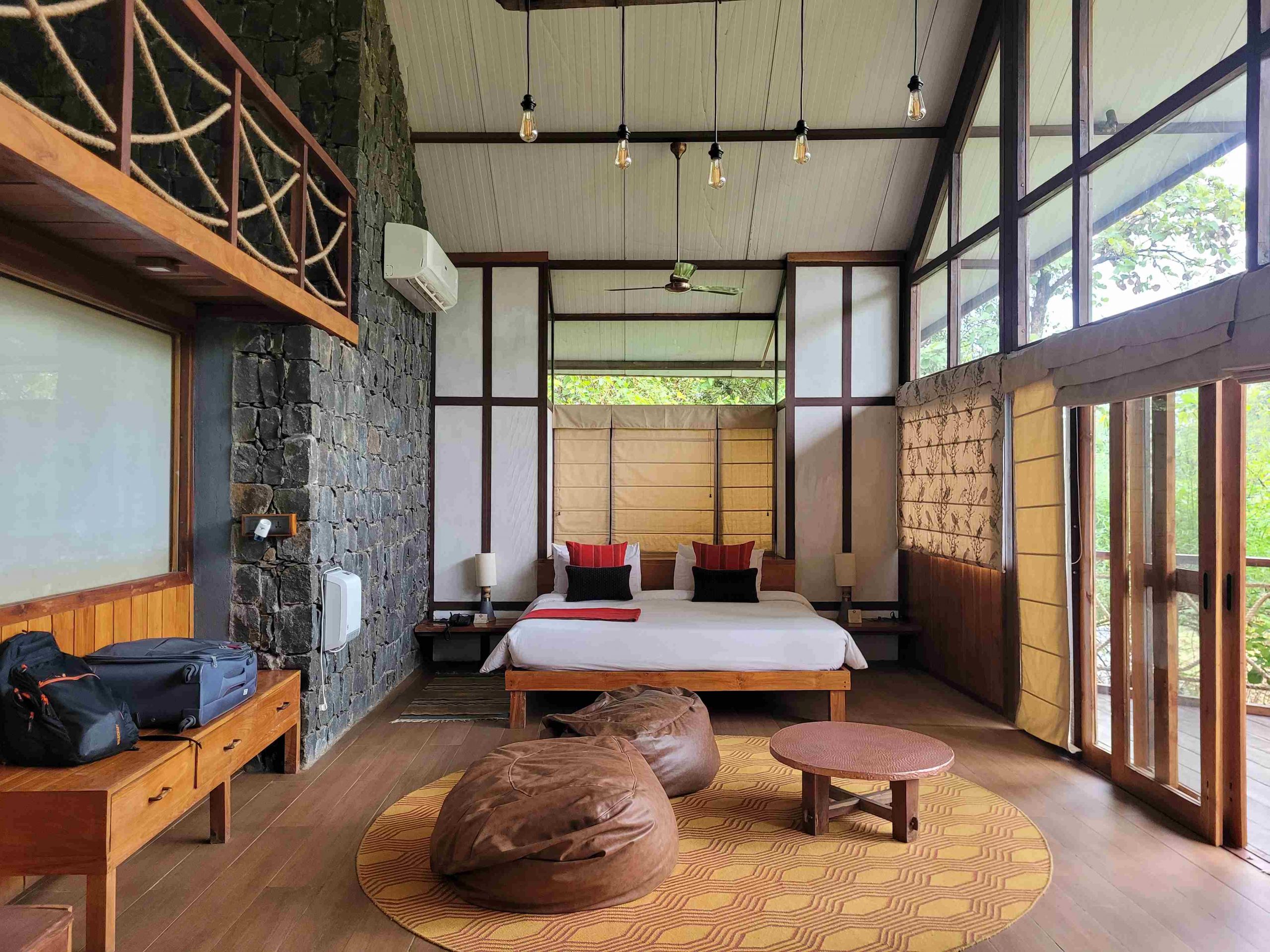
And the one at Pench Tree Lodge is a beautiful blend of vintage and natural aesthetics. The treehouses are built 18-feet high atop Mahua trees and are supported by stilts. There’s a sense of adventure and seclusion that comes with the tree houses.
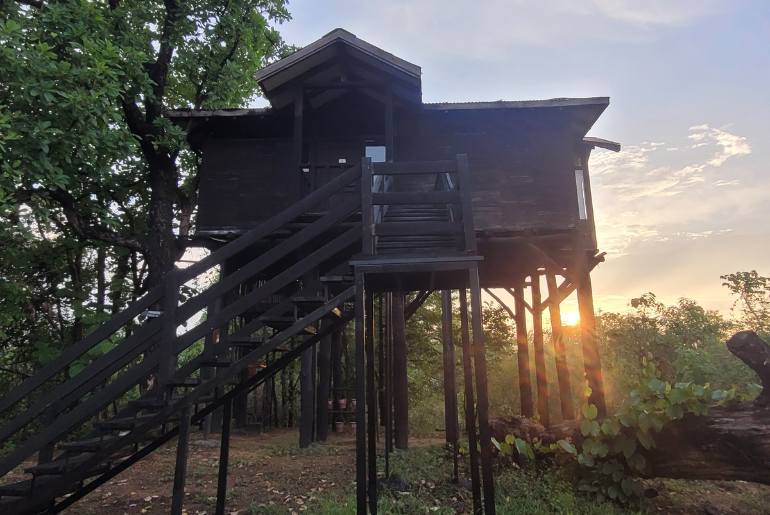
What makes the tree house stand out for me is the wooden deck clinging to the Mahua tree. One can sit here for hours sipping freshly-brewed French press, listening to birds chirping, insects creaking and soaking in the crisp forest air. I was even welcomed by my neighbour, a squirrel who crawled into my room to check up on me.

With sustainability and responsible travel at the forefront, Pench Tree Lodge bans single-use plastic and equips rooms with eco-friendly toiletries —right from hawai slippers made with recyclables to neem toothbrushes and toothpaste tablets.
There are steel bottles handed to guests to refill at drinking water stations. Keep in mind there’s little to no connectivity around the lodge. Though dongles in rooms can temporarily give you a sigh of relief.
Flavours Of Madhya Pradesh
Room service isn’t permitted at Pench Tree Lodge to prevent uninvited guests like rodents and reptiles. So, for meals I’d walk along meandering trails, surrounded by trees and flanked by lanterns to reach the dining hall. Quite an adventure in itself!
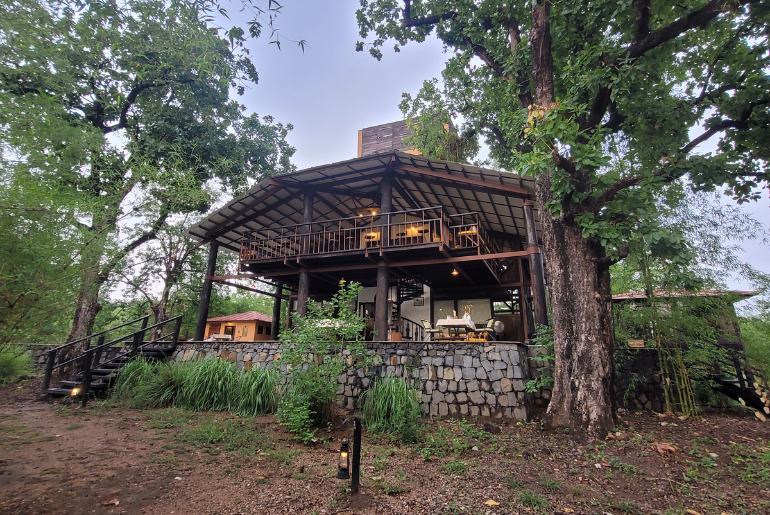
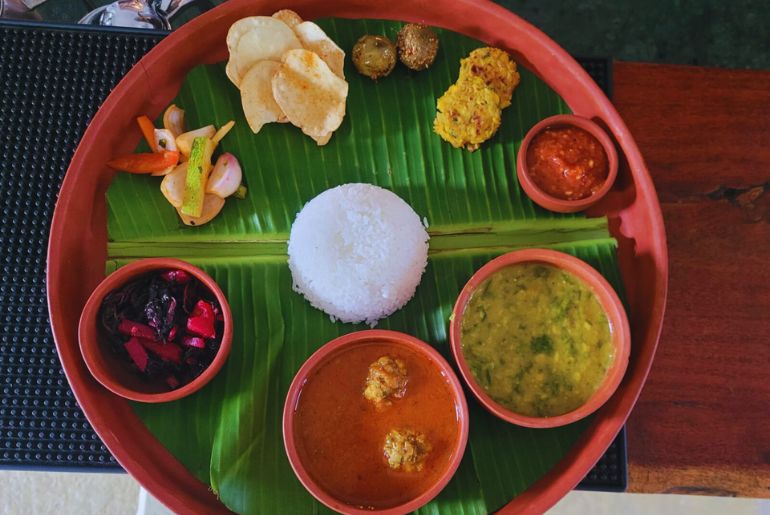
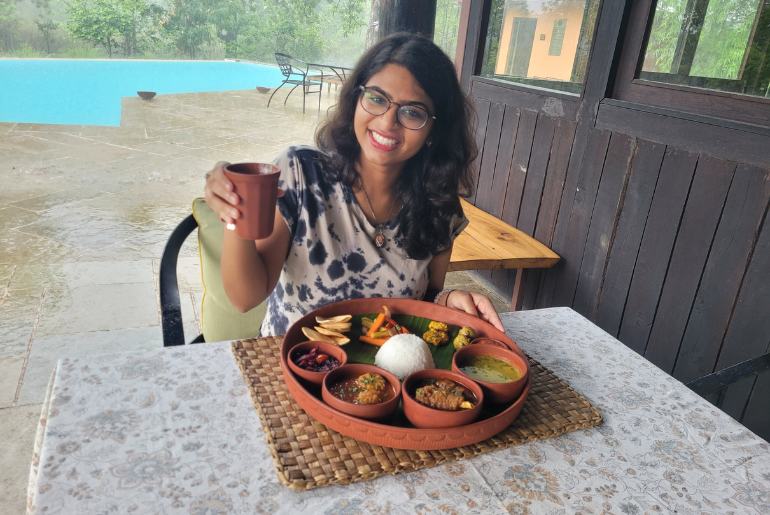
 India’s First Luxury Underground Photography Hide
India’s First Luxury Underground Photography Hide
A wildlife photographer’s paradise, Pench Tree Lodge is home to India’s first luxury underground photography hide — The Kipling Hide. It helps photographers capture great eye-level shots of animals and birds as they visit the man-made watering hole to quench their thirst.
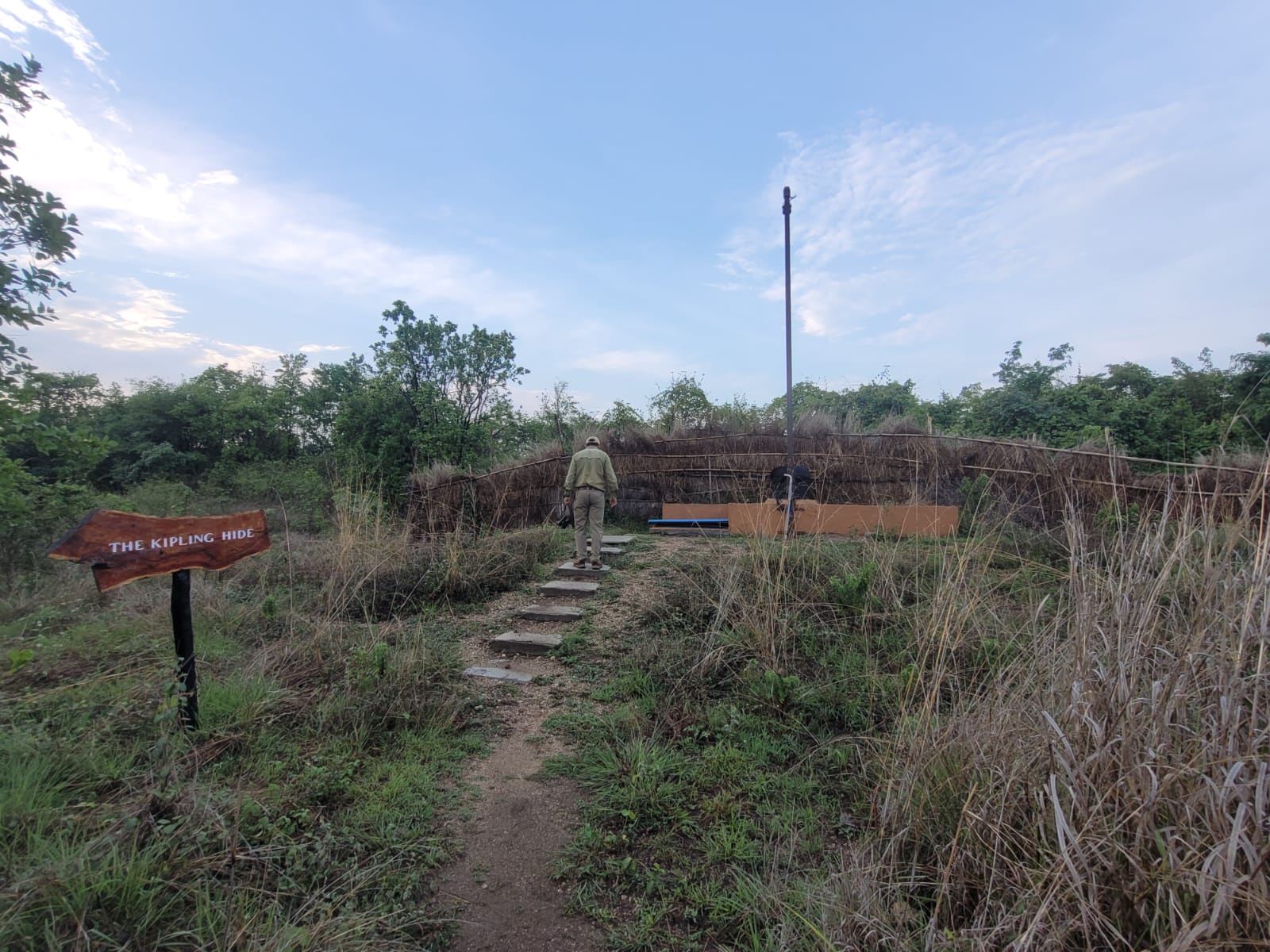
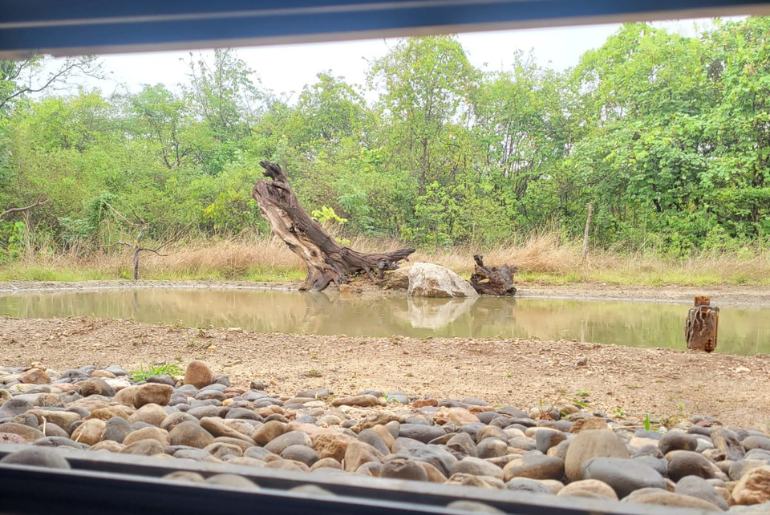
Unmissable Experiences At The Lodge
While the beautifully designed nature cottages serenaded me, the allure of the outdoors at Pench Tree Lodge won me. The lodge, sustainably built, keeping the existing forest intact has managed to deliberately create a space where both guests and the wild co-inhabit.
Resident naturalists take guests for bird watching, where birders can spot over 100 species of birds in the lodge itself.
Organic garden tours introduced me to Singapore cherries, smaller varieties of jamuns and other fresh produce. A scarecrow guards the farm. It successfully drives away wild boars. But is unsuccessful with langurs who often steal corn.
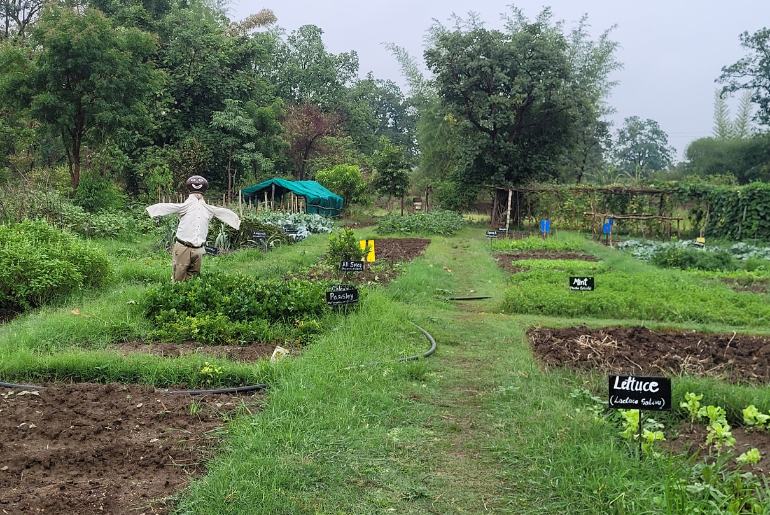
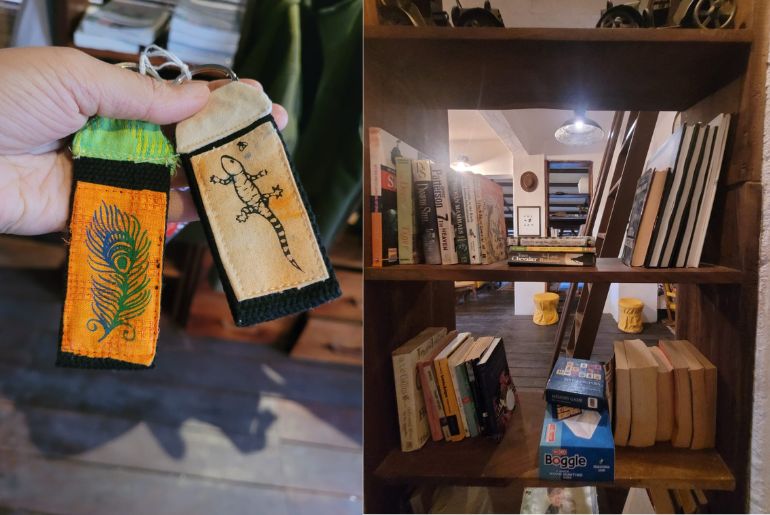
The library-lounge features a good collection of books on wildlife, a TV for documentary viewings and board games to let off steam.
At the reception, the resident cat, Lufi greeted me with a miaow and an affectionate rub.
Another favourite spot of mine at Pench is a dark, rugged trail near the reception. In the quiet of the night, under the twinkling stars, I spotted fireflies. Thousands of them! Trees glimmered golden and I stood still soaking in the magic.
The People!
A write-up about Pench is incomplete without mentioning its inhabitants — the Team at Pench Tree Lodge. As a writer, who has chosen to be part of the creative field against all odds, I’m inspired to meet a crew, so passionate, that they choose to take up such unique professions, reside in remote jungles, miles away from their families, with hardly any network, just for the love of the wild.

Like the leopard, my trip to Pench was like sinking my teeth into the inviting world of the wild. While it left me thoroughly satiated for the time being, it won’t be long before I’ll be out on my next prowl to another dense forest in India.
For more information visit Pugdundee Safaris and Pench Tree Lodge
MY TIPS!
- Pench Tree Lodge is a 3-hour drive from the nearest Nagpur Airport
- Pench National Park’s core zone remains closed during the monsoon season, from July to mid-September. The buffer zone is open for safaris during this time.
- Book at least 2 safaris, well in advance
- IDs like Aadhar, Passport etc are a MUST for safaris
- Wear comfortable shoes and camouflage clothes during safaris
- Ask resident naturalists to show you Camera Trap Footage
All Image Credits: Sanjana Shenoy
Feature Image Courtesy: Sanjana Shenoy & @pugdundeesafaris & @the_explorer.01/ Instagram


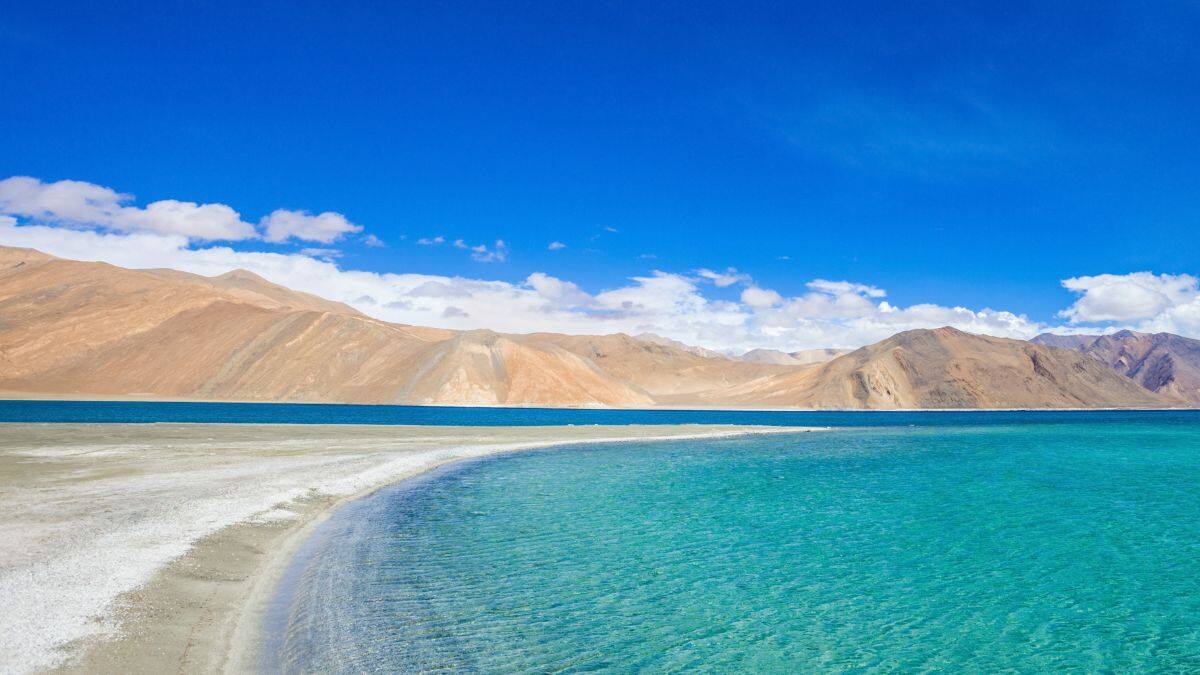

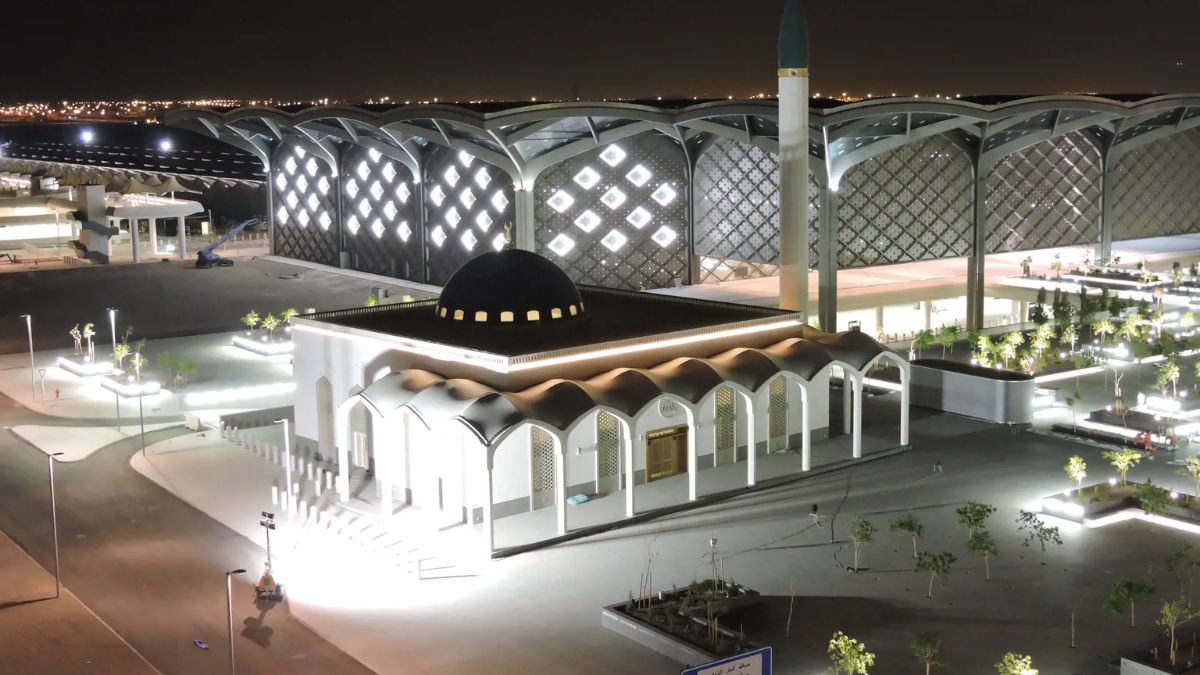
 India’s First Luxury Underground Photography Hide
India’s First Luxury Underground Photography Hide